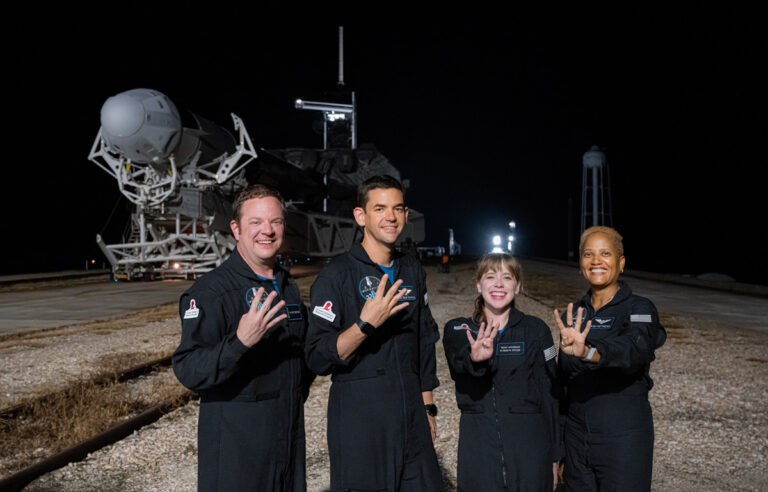Space race update: Elon Musk’s rocket to go 269 miles further than Jeff Bezos went

SpaceX—Elon Musk’s company—is set to launch four people into space this Wednesday (15 September) on a three-day mission that is the first ever to orbit the Earth with exclusively private citizens on board. The ‘Inspiration4’ mission concludes a summer that saw billionaires Richard Branson and Jeff Bezos make it to space, on Virgin Galactic and Blue Origin spaceships respectively, a few days apart in July.
The crew of Inspiration4 have undergone rigorous training to prepare them for a voyage around the Earth. And thanks to the mission’s financial backer, billionaire entrepreneur Jared Isaacman, they will fly much higher, faster and further than both Branson and Bezos.
The mission itself is far more ambitious in scope than the few weightless minutes Virgin Galactic and Blue Origin customers can buy. The SpaceX rocket will be flying further than the orbit of the International Space Station (ISS). “The risk is not zero,” said Isaacman in an episode of a Netflix documentary about the mission. “You’re riding a rocket at 17,500 miles (28,000 kilometres) per hour around the Earth. In that kind of environment there’s risk,” he continued.
SpaceX has already given no fewer than ten astronauts rides to the ISS on behalf of NASA—but this will be the first time it’s taking non-professional astronauts. While no price has been revealed for the mission, a single launch of one of SpaceX’s reusable Falcon 9 rockets is believed to cost around $50 million—well within the reach of Isaacman, who has also splashed out on Super Bowl adverts for the mission.
Lift-off is scheduled for Wednesday at 8:00 pm Eastern Time (ET) from launch pad 39A, at NASA’s Kennedy Center in Florida, at which the Apollo missions to the Moon took off. In addition to Isaacman, who is the mission commander, three non-public figures were selected for the voyage. Each crew member was picked to represent a pillar of the mission.
The youngest, Hayley Arceneaux, is a childhood bone cancer survivor, who represents “hope.” She will become the first person with a prosthetic to go to space. The 29-year-old was picked because of her work as a Physician Assistant in Memphis for St. Jude’s Hospital, the charitable beneficiary of Inspiration4.
Former US Air Force veteran Chris Sembroski, 42, secured the seat of “generosity.” The last seat represents “prosperity” and was offered to Sian Proctor, a 51-year-old Earth science professor who, in 2009, narrowly missed out on becoming a NASA astronaut. She will be only the fourth African American woman to go to space.
Over the three days of orbit, the crew’s sleep, heart rate, blood and cognitive abilities will be analysed. Tests will be carried out before and after the flight to study the effect of the trip on their body. The idea is to accumulate data for future missions with private passengers.
Although space travel remains for the moment only partially open to a privileged few, the stated goal of the mission is to make space accessible for more people. “In all of human history, fewer than 600 humans have reached space,” said Isaacman. “We are proud that our flight will help influence all those who will travel after us.”





